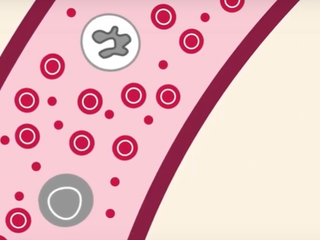What is childhood leukaemia?
Leukaemia is a type of blood cancer that affects white blood cells in the blood and bone marrow.
White blood cells and leukaemia
White blood cells play an important part in our immune system, protecting us against infection. In leukaemia, large numbers of abnormal white blood cells – leukaemia cells – start to develop in the bone marrow (the spongy materials inside some of our bones where new blood cells are made). The leukaemia cells multiply very fast, overcrowding the bone marrow and spilling out into the bloodstream.
As more leukaemia cells develop, there’s less room in the bone marrow to make healthy blood cells, including white blood cells, red blood cells and platelets. This causes a range of symptoms.
Some types of leukaemia are acute, meaning they develop quickly. Others are chronic and develop more slowly.
Leukaemia in children is almost always acute. There are different types which affect different blood cells, and each type needs different treatment.
Find out more about how blood cells are made. We also have information about the immune system.
What causes childhood leukaemia?
At the moment we don’t know what causes childhood leukaemia. We do know that in leukaemia there are changes in the genes of cells in the bone marrow. Genes are a set of instructions that tell individual cells how to behave, and errors in these instructions mean cells can’t work properly.
There’s nothing you could have done to stop your child developing leukaemia. It’s not possible to ‘catch’ leukaemia from someone else and it isn’t passed from parent to child.

What is blood cancer?
Find out how blood cancer starts and how it can affect your body and your life.
